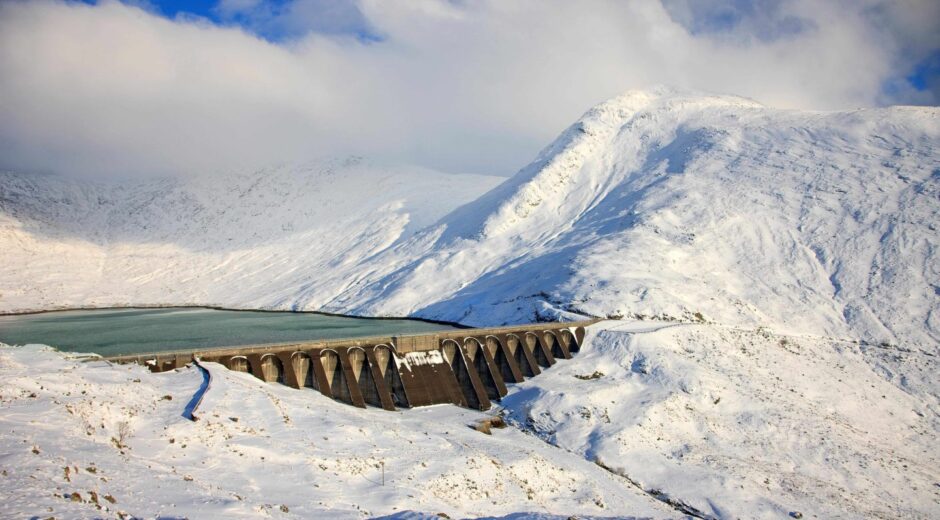
The year 1945 is redolent with historic significance and there will be no shortage of 80th anniversaries to be marked as the last generation with first-hand experience of the Second World War fades away.
Somewhere among them, I hope memories will be revived of the great events that transformed the economy of the north of Scotland and remain highly relevant down to the present day.
Making 2025 “the year of the hydro” would be a fitting commemoration with a vital current purpose.
The language has changed. Nobody talked about renewables in 1945 and “net zero” was an unknown concept. But some things are constant.
The topography of the Highlands, then as now, made the generation of electricity from hydropower a possibility which did not exist in most of the UK.
Hydropower – through the well-proven technology of Pumped Storage – is mainly an opportunity for the north of Scotland (alongside north Wales). It is not only feasible but essential, in order to help balance intermittent generation from wind within the system; an increasingly urgent imperative.
Once again, large-scale delivery of hydropower represents both a challenge and a huge opportunity. In the 1940s, the challenge was mainly about overcoming entrenched opposition of interests which opposed industrialisation in the north of Scotland, particularly if it interfered with what they called “amenity”. That often translated into the interests of landed proprietors.
These were faced down in order to create a continuing contribution to the nation’s electricity supply and also a transformational impact on the Highlands.
Anyone who views the noble hydro schemes at Sloy or Pitlochry – the first two on the new Hydro Board’s agenda in 1945 – would surely wonder now what “amenity” they threatened and why they were so bitterly contested.
The Hydro-Electric Development (Scotland) Act had become law in August 1943 but early days were committed to preparatory work and fending off efforts to bring hydro under a Central Generating Board rather than operating as a separate entity with a social purpose.
When the new Hydro Board set about delivering these early schemes in 1945, the “amenity” battles were revived with renewed vigour.
It now seems extraordinary, for example, that the Tummel-Garry scheme at Pitlochry was intensely debated on the floor of the House of Commons for eight hours before it could proceed.
Incidentally, the Hansard transcript of that impassioned debate is a fascinating historical document – and I have to say that the standard was a lot higher then than it is now!
The anniversaries to be marked in the coming year will also, of course, include the election of the post-war Labour government.
That also had huge significance for the story of hydro. The great war-time Secretary of State for Scotland, Tom Johnston, retired from Parliament and became chairman of the North of Scotland Hydro Electric Board, removing any ambiguity about the government’s determination to drive through these great schemes.
That lasted until the 1960s, when new plans for hydro schemes were still running into the same old opposition and nuclear power was a new kid on the block.
Latterly, the emphasis turned to Pumped Storage Hydro, at Cruachan and Foyers, the latter being Scotland’s last hydro scheme of scale, inaugurated in 1975.
But what of now? In response to the rapid growth in intermittent renewables, a queue has formed of Pumped Storage Hydro Schemes, ready to take off.
According to the British Hydropower Association, there are currently 11 at various stages of development in the UK pipeline, nine in Scotland and two in north Wales.
The way was led by the project now known as Loch Cathrach (formerly Red John) on Loch Ness which was developed through a visionary piece of entrepreneurism by a Scottish company, ILI Renewables, and holds full planning consent. It is now owned by the Norwegian state company, Statkraft.
Other Scottish schemes include Drax’s proposed expansion of Cruachan in Argyll and SSE’s Coire Glas on Loch Lochy.
As we know from history, once hydro schemes are in place they run forever with very low outlay.
However, the catch is that they cost a lot to build and, in this privatised age, developers need security to underpin that investment. The issue had been kicked about by the previous Tory government for a couple of years without a decision.
The good news in October was that the incoming Labour government reached a conclusion very quickly, confirming a new scheme to stimulate investment into Long Duration Storage technologies including PSH.
The Cap and Floor mechanism limits developers’ exposure to market risk and has also been successfully used for UK interconnector investment. This announcement was a huge, long-awaited breakthrough for Pumped Storage Hydro.
Now the expectation is that details of the scheme will be published early next year, triggering a wave of activity. Let’s hope so.
Eighty years ago, there was a huge social purpose behind hydro, bringing not only power but also well-paid work to the crofts and glens of the north. Today, a hydro revival can do what no other branch of renewables has so far delivered – thousands of jobs as well as energy security.
For those of us who recall the Highlands during the great hydro era, nothing in the energy transition would give greater satisfaction than for a new generation of engineers and construction workers to be given that same opportunity to build something great for Scotland’s future.
Recommended for you
